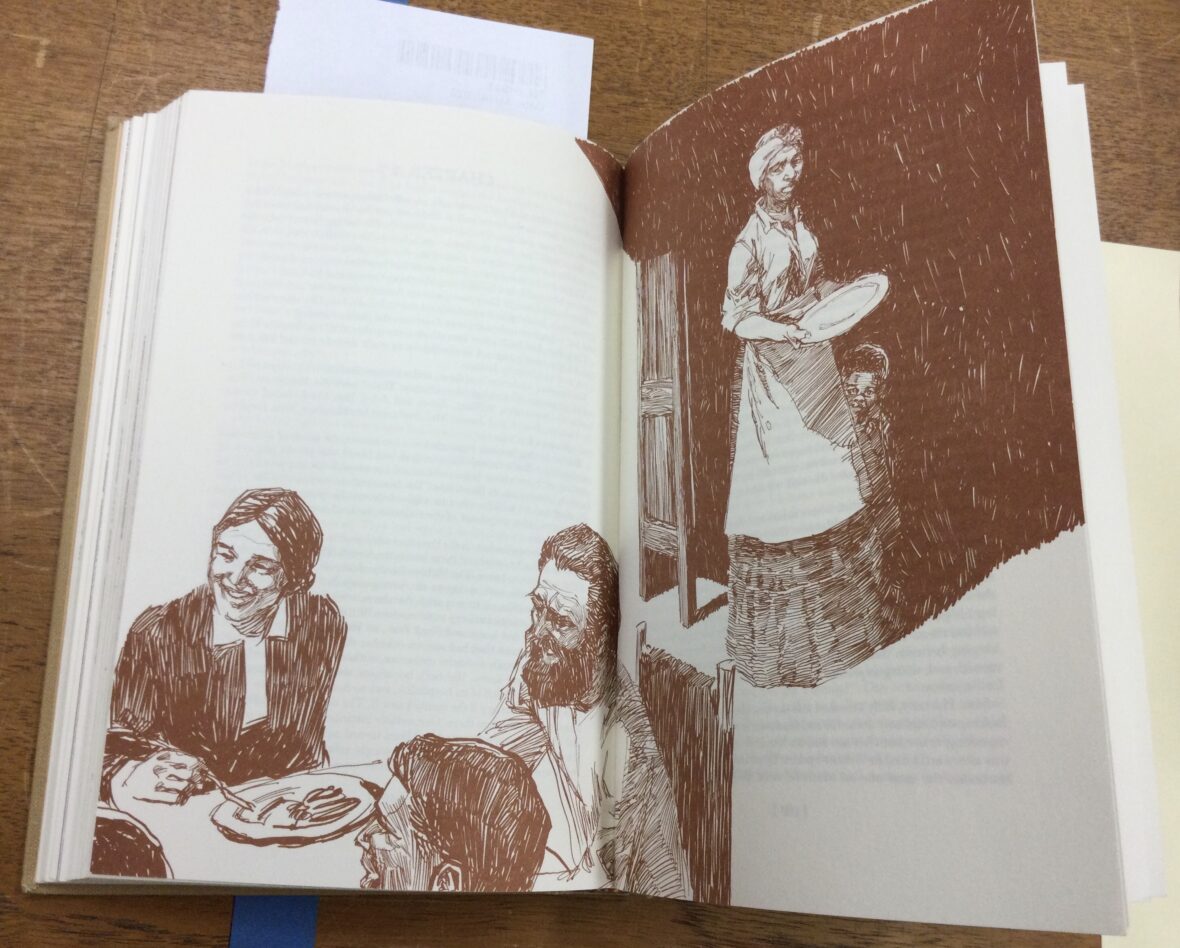
From the Briscoe Center’s Archives
True freedom was an aspiration and a near impossibility for enslaved people in the United States before the Civil War. The Briscoe Center’s extensive archives on the American South preserve examples of how enslaved people did gain their freedom from a system that treated them as property. Documents defining this variously as “emancipation,” “manumission,” and “freedom papers” detail various methods, including travel to other states where those rights were inherent, or freedom purchased through a bond. Yet even freedom attained by legal methods was fragile for Black Americans.
Silvia Hector Webber’s story is one such example. Silvia’s freedom, and that of her three children, was purchased in 1834 in a bond now on display at the Briscoe Center. Silvia Webber would go on to help others to freedom via travel to Mexico, and her house became a stop on the Underground Railroad. The Webber land, located east of Austin, gave its name to present-day Webberville.
Freedom Papers like Webber’s cover an era from Spanish rule to the end of the Civil War; including petitions signed by Spanish Governors, survey maps, and emancipation papers for entire families. These personal, often complex, stories show how the legacy of enslavement permeates American history. We invite you to explore more evidence of this shared history through research in our archives and digital collections.
The Story of Silvia Webber
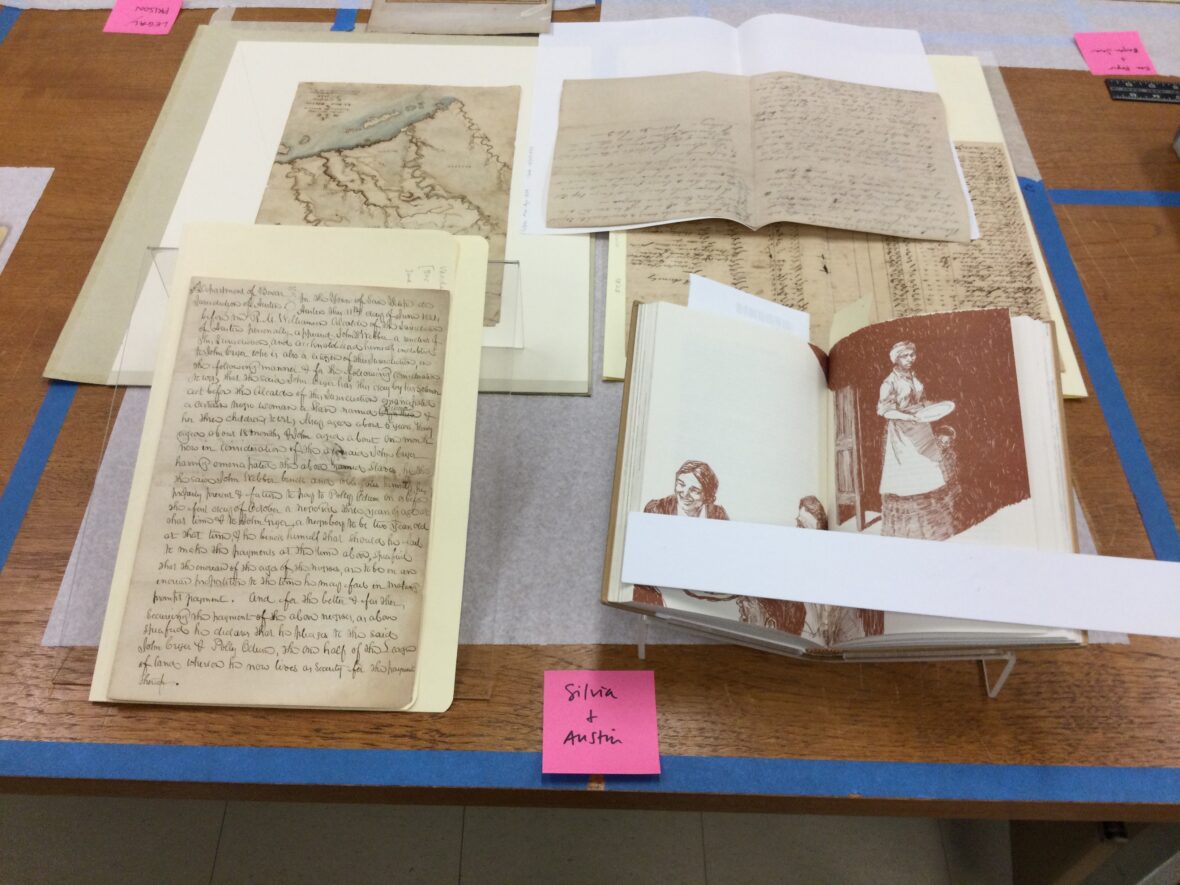
The bond, seen above, from John Webber specifies the status and cost of freedom for Silvia and her three children: by October of the same year, the Webbers were to “pay” “a negro girl three years of age . . . and a negro boy to be two years old.” The Webber land east of Austin is listed as collateral.
Today, we know that the Webbers never paid the bond, instead losing their home to Cryer, who quickly used it to pay his own debts. The Webber family relocated, eventually moving to Mexico. Silvia was known as welcoming and generous; her assistance, and the Webber household, would serve as a refuge for others seeking freedom.
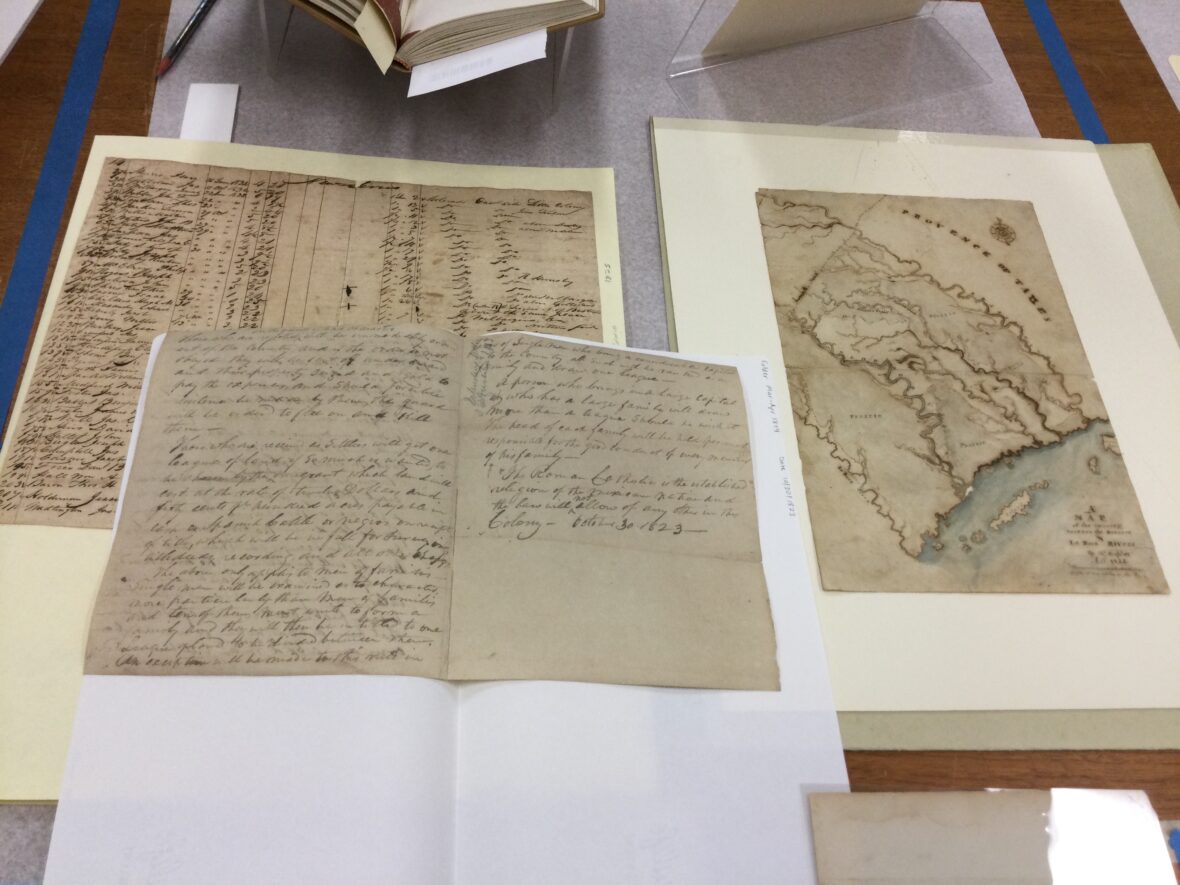
Mississippian and Natchez Advertiser rewards for runaway slaves
The hurdles which enslaved people faced to gain freedom weren’t just legal. As seen in the pages of the Mississippian and Natchez Advertiser runaway slaves were publicized and seen as a public danger. One advertisement states that Mary had been purchased three years ago with her two children. Her escape to freedom likely included the hope to free her children in the future. The last entry of this ongoing advertisement reads, “The above slave having since been seen aboard the steam-boat Missouri, which left New-Orleans on the 28th nlt. It is strongly suspected that she has gone of in that boat.”
Freedom papers collection and historical documents
Natchez Trace Slaves and Slavery Collection
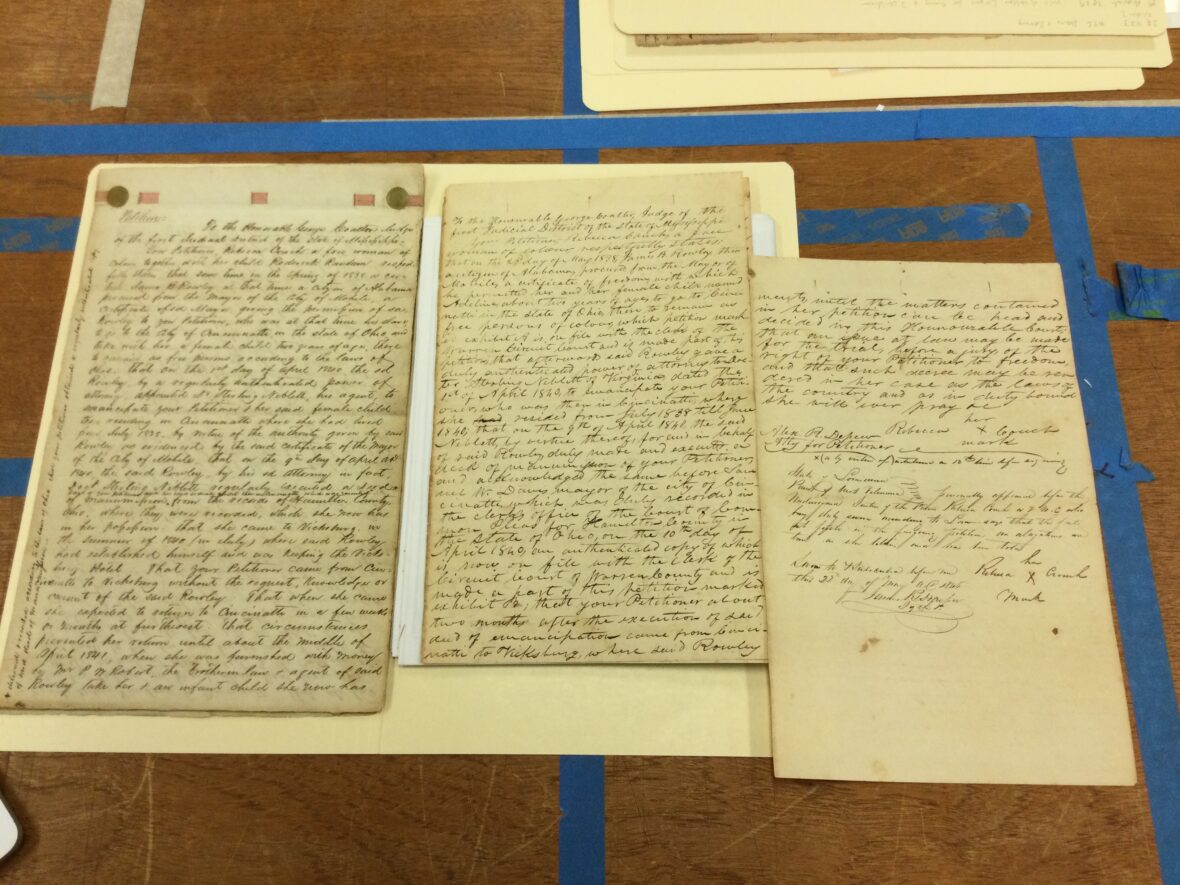
This winding story describes events over a period of about five years, related to Couch’s imprisonment in Warren County following her travel to Mississippi.
She was seventeen years old when she traveled with a group of free people of color to Ohio in 1838, along with a child described as “her infant.” This document includes a court “interrogatory” a record from questioning multiple persons. Among them is William Henry Harrison, clerk of the Court of Common Pleas in Hamilton County, Ohio, who would later become the ninth president of the United States.
The Story of Josias Grey and Anna Maria
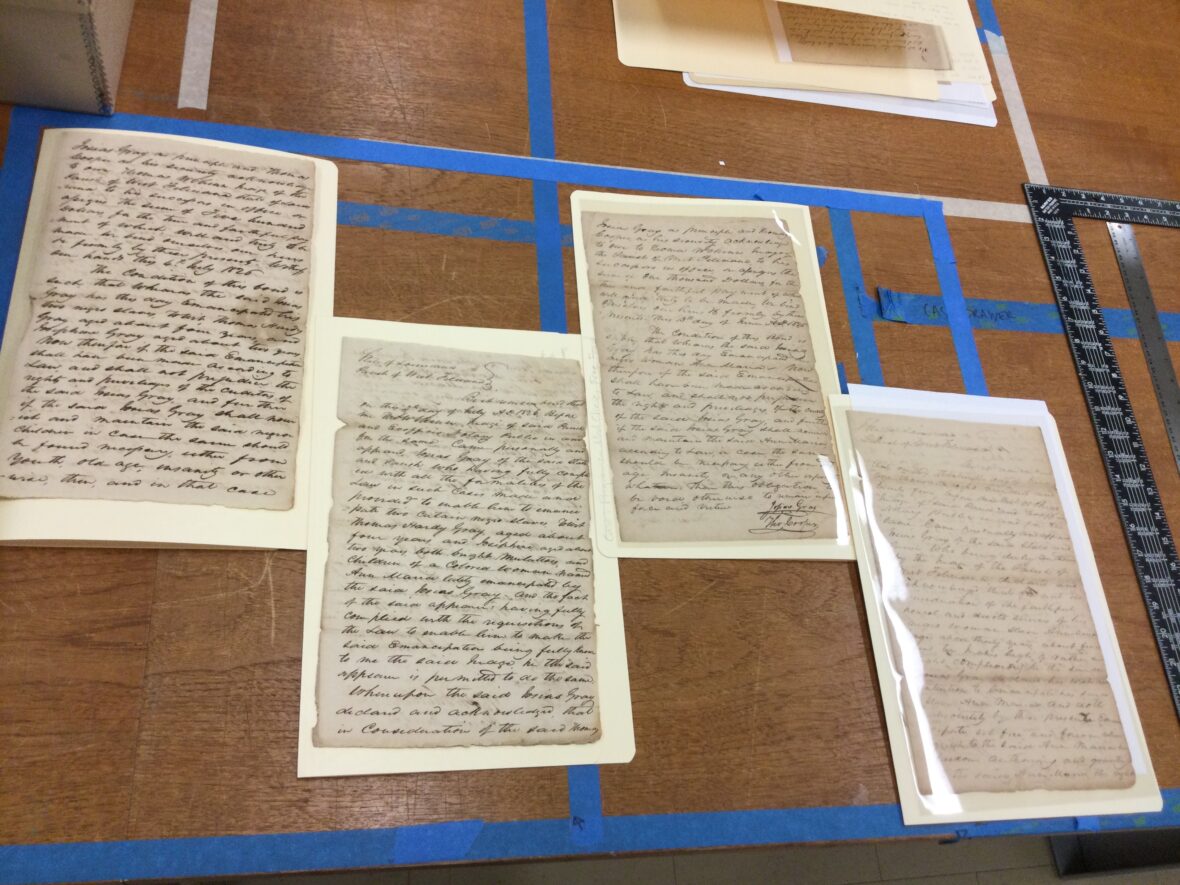
These four records tell part of one family’s complex story. In them, Josias Gray emancipates and pledges to “maintain” Ann Maria, including her “sickness, insanity, old age or any other infirmity whatever.” The $1,000 bond for Ann Maria would amount to about $31,000 today.
Josias Gray and Ann Maria had two children: Thomas Hardy [Gray] and Josephine Gray. They are described as “his illegitimate children by the said Ann Maria” and that he “does hereby acknowledge and declare that the said children are and shall be from this day forward, as fully entitled to their freedom as though they had been born inheriting that right.” The $500 bond for the children would amount to about $15,500 today.
Featured Documents:
This exhibition was produced by the Briscoe Center for American History, Dr. Don Carleton, Executive Director. Curated by Dr. Don Carleton, Erin Purdy, Jill Morena, and Dr. Sarah Sonner. The Briscoe Center wishes to thank Dr. María Hammack and the Treviño family—descendants of Silvia Hector Webber research contributing to this exhibit.
This exhibit draws from the Natchez Trace Collections, the Vandale Collection, the Buckner Papers, and the Stephen F. Austin Papers. For more information on the Briscoe Center’s holdings related to slavery in the American South.
Freedom Papers for Silvia Hector Webber, June 11, 1834, camh-dob-025681
Rendering of Silvia Webber as imagined by Charles Shaw in Noah Smithwick’s The Evolution of a State or Recollections of Old Texas Days, Austin: The University of Texas Press, 1983, camh-dob-025680
*Map showing Mississippi Territory (encompassing present day Alabama), 1817
Signed petition by Amy to Governor of Natchez, July 24, 1797, camh-dob-025682
Writ of Habeas Corpus for Fanny and her three children, March 19, 1829, camh-dob-025702
Record of capture at the Adams County jail of “a Negro woman named Louisa” who “absconded while on her way home,” ca.1821, camh-dob-025704
Receipt of twenty-five dollars payment to [from?] James H. Bullin for “ketching one Negro boy Jack,” November 10, 1845, camh-dob-025706
Survey map showing the claim of ownership by William Vousdan for land on either side of Bayou, camh-dob-025700
Free Paper of Perene Weeks, certifying that she is a “free Mulatto woman” and “free Creole of this State,” Bayou Sara, camh-dob-025701
Free Papers of Susan Ann White, Warren County, Mississippi, May 23, 1837, camh-dob-025699
Free Papers of “Sylva” Green, 1839, camh-dob-025708
Bound petition detailing the case of Rebecca Couch, ca. 1842, camh-dob-025709
Documents of Priscilla Davis, sending Cassy Ann Davis to Ohio for residency, July 7, 1842, camh-dob-025683 and camh-dob-025684
“B. Bettelany to Deed of Emancipation Lucy and others Copy of Record,” February 1, 1832, camh-dob-025668
“Emancipation of Slave Ann Maria by Josias Gray,” June 13, 1825, camh-dob-025712
“Bond of Josias Gray for the Emancipation of ‘the Slave Ann Maria’,” June 13, 1825, camh-dob-025713
“Act of Emancipation of Josias Gray to Thomas Hardy [Gray] and Josephine Gray,” July 4, 1826, camh-dob-025710
“Bond of Josias Gray for Thomas Hardy and Josephine,” July 4, 1826, camh-dob-025711
Page from list of deeds for Austin settlement, including John Webber, June 22, 1832, camh-dob-025669
Stephen F. Austin’s terms of settlement, October 30, 1823, foth_0023_multipage
“A map of the Country, between the Brassos & La Baca Rivers” [Brazos and Lavaca], 1822, foth_0178
Advertisement in the Mississippian and Natchez Advertiser for a twenty-dollar reward for the return of enslaved “Mulatto Woman named MARY,” 1824


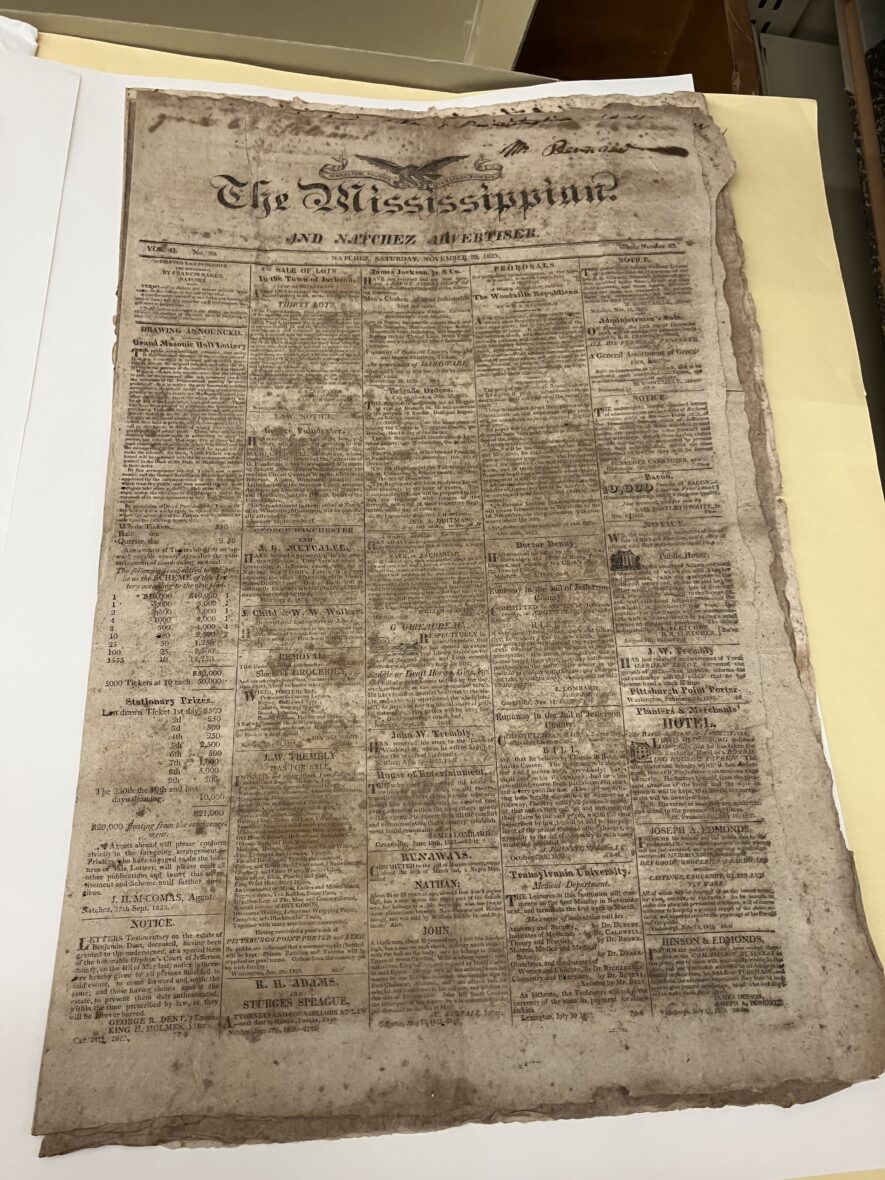
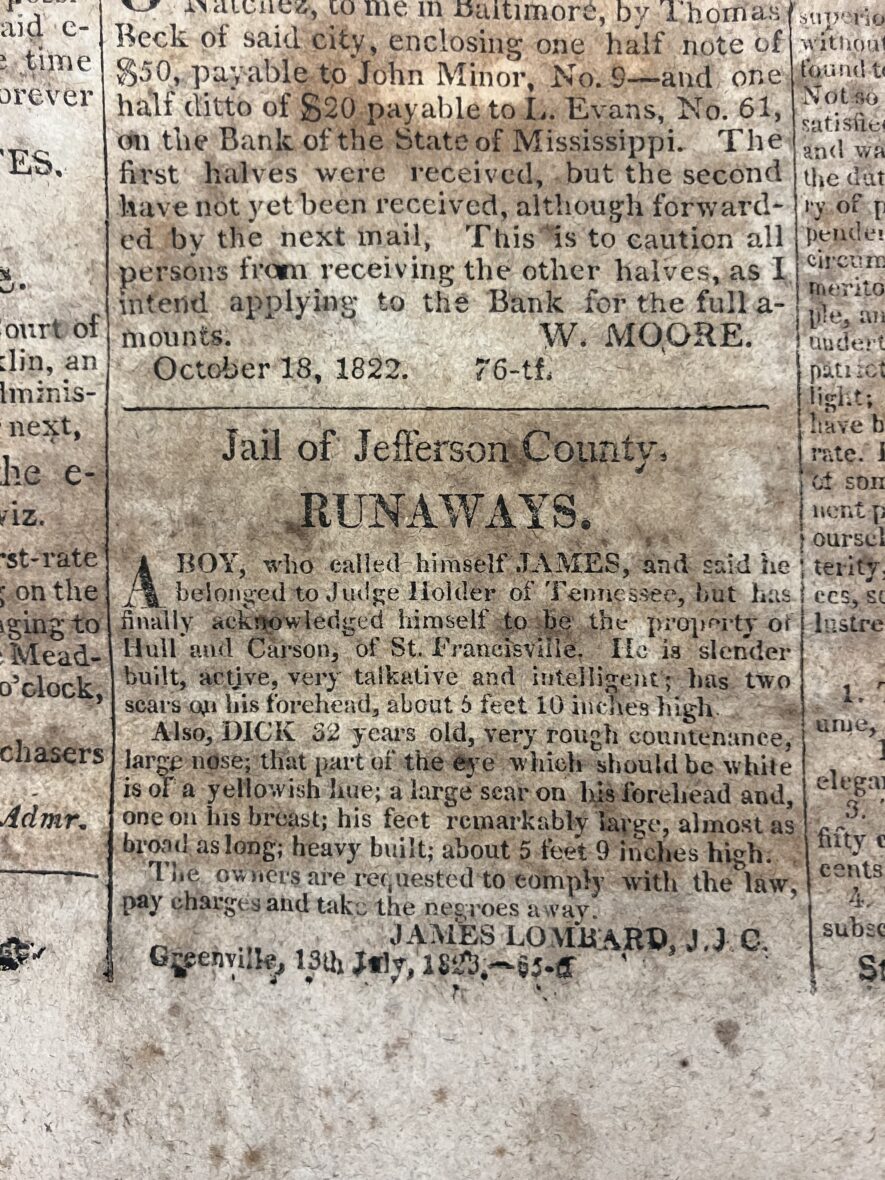
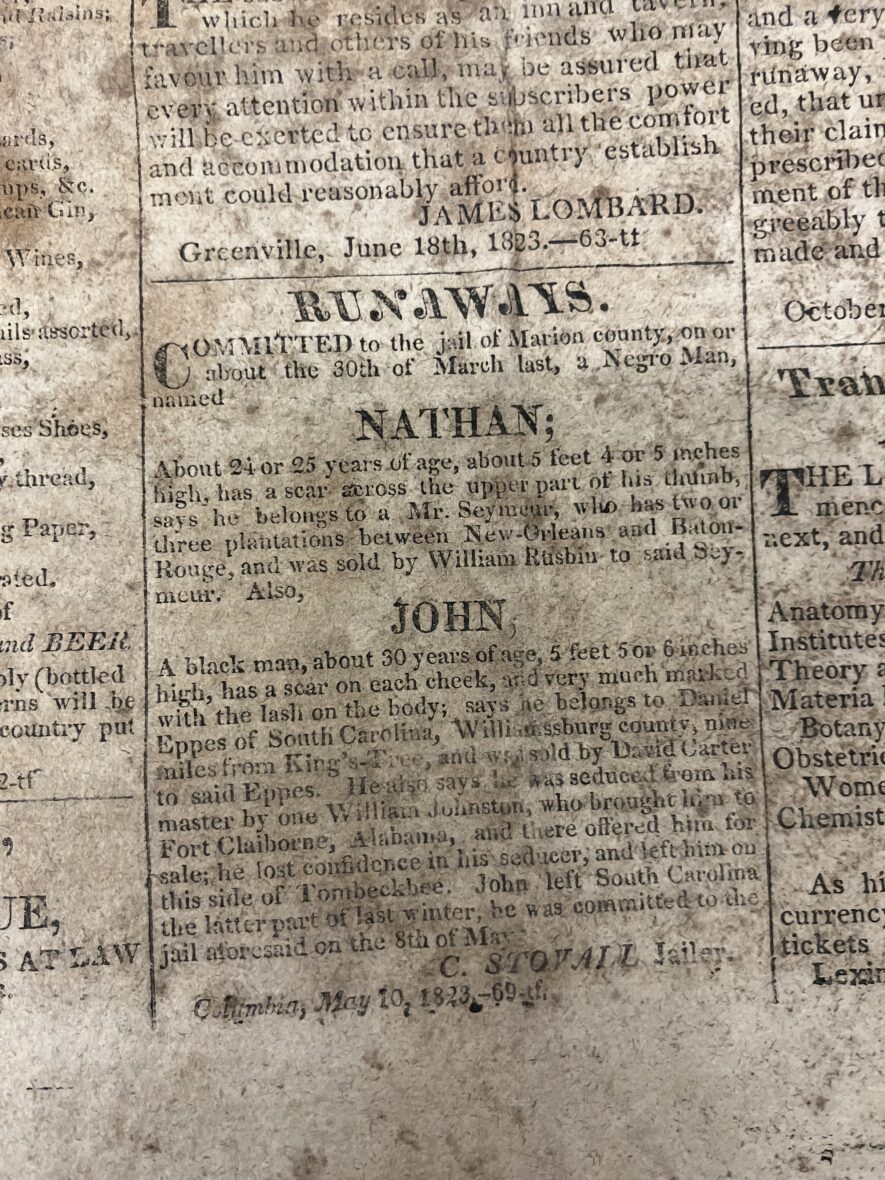
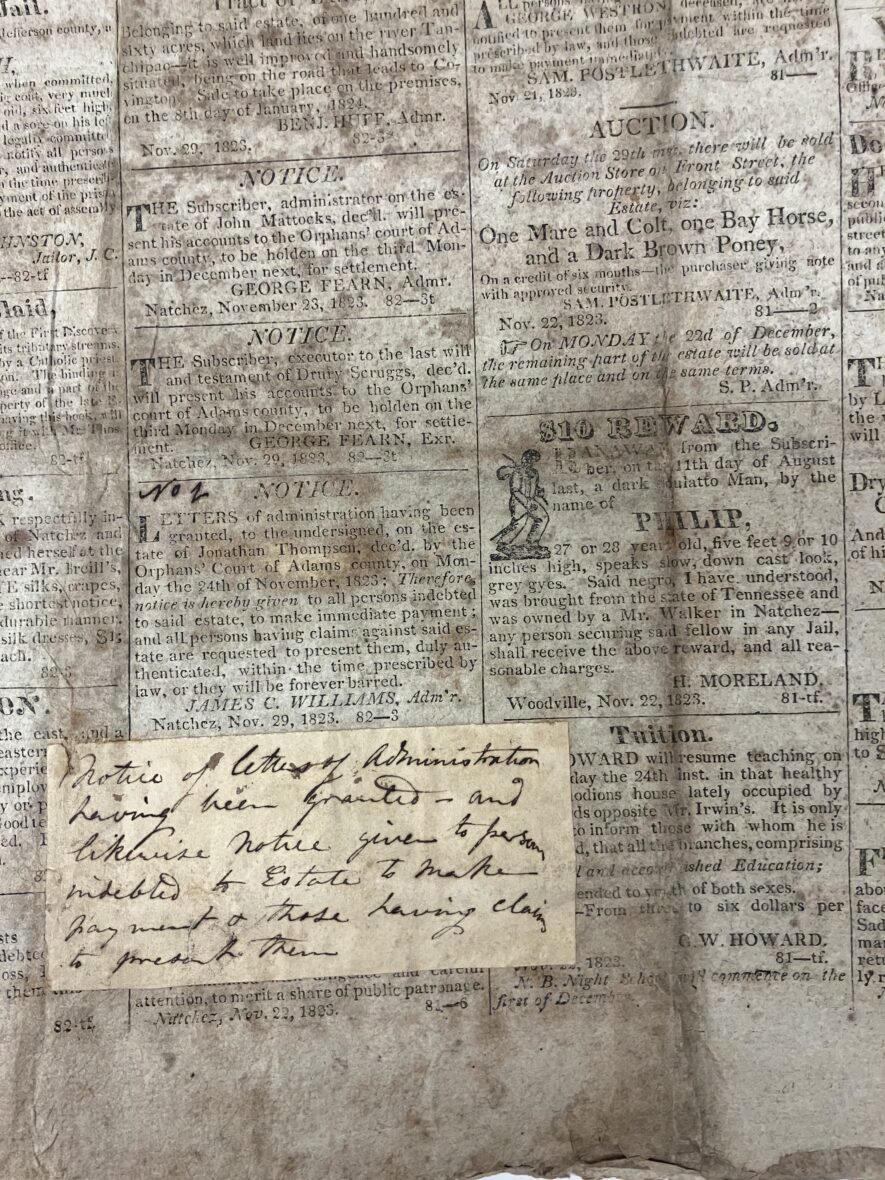
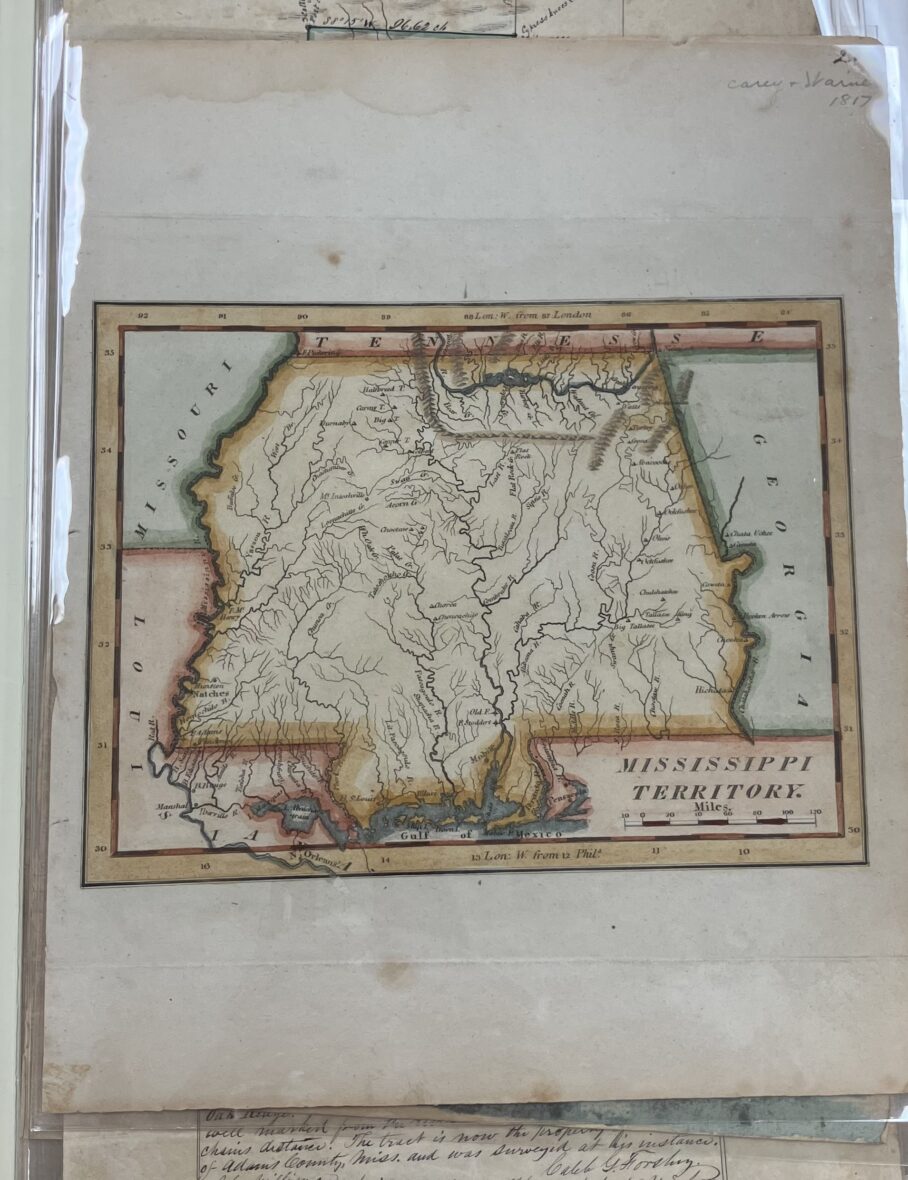
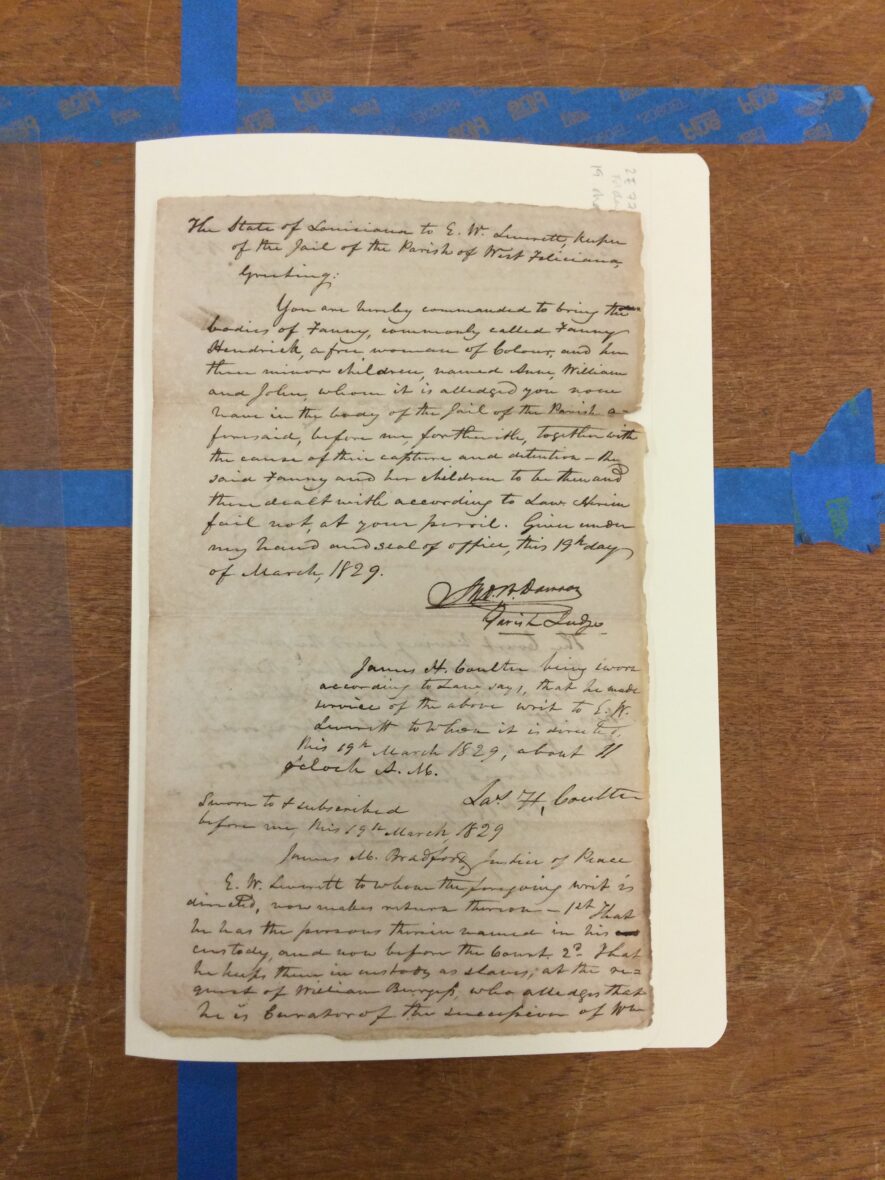
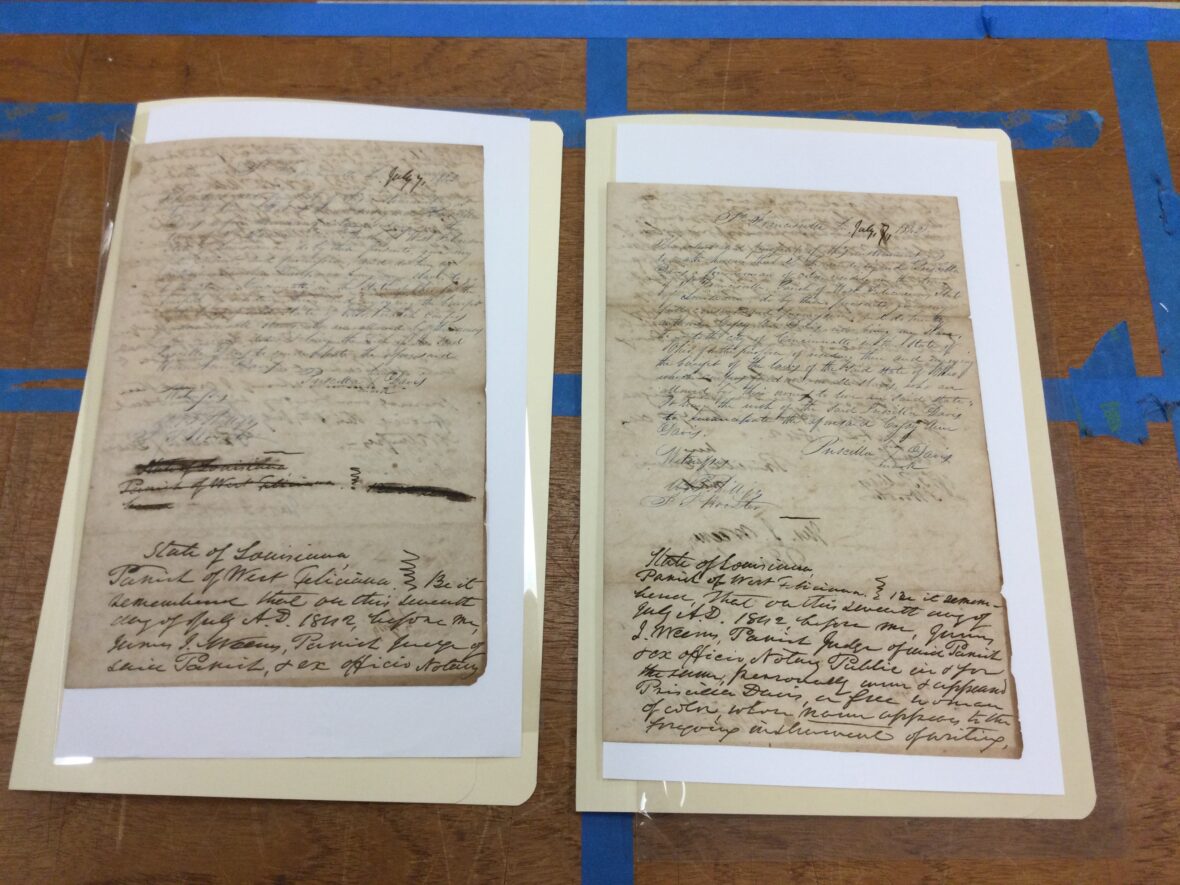
![This document asserts that Susan Ann White, “a black woman aged about twenty three years” paid her enslaver, William Everett, $600 to obtain her freedom (about $19,000 today). Everett appeared before probate court and certified that “I do hereby acknowledge and for divers[e] services rendered me while sick and other causes and considerations me hereunto moving have emancipated set free and forever discharged and released from the bonds of slavery and do by these presents emancipate set free and forever discharge and release from the bonds of slavery the said Susan Ann White aged as aforesaid and able to work and gain a sufficient livelihood and maintenance.”](https://briscoecenter.org/wp-content/uploads/2024/01/Perene-Weeks-885x1180.jpg)
